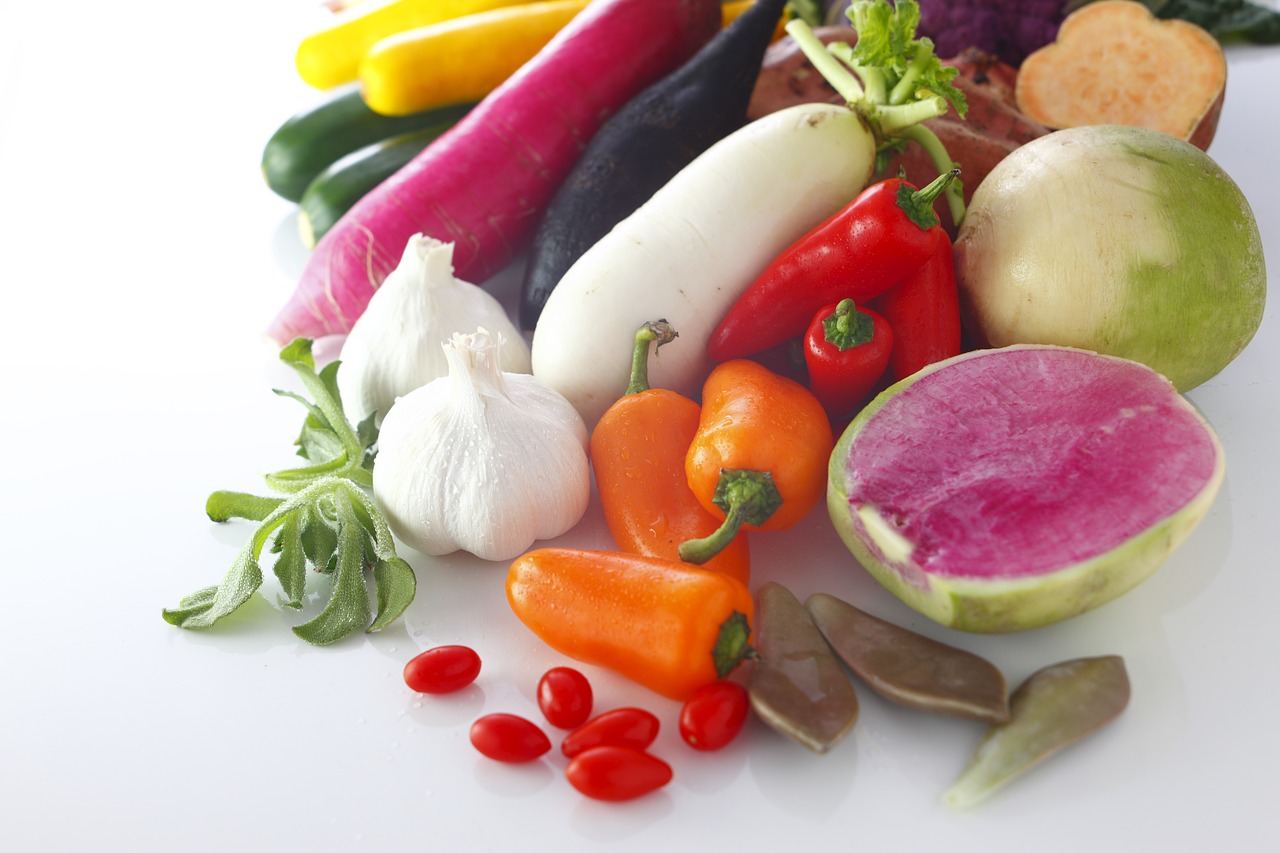We are not referring to the candy commercial enticing us with colorful pellets falling from the sky. In this particular case, “eat the rainbow” is intended to remind the health conscious to choose from a varied selection of fruits and vegetables every day. When you eat the rainbow, you are getting a good mix of essential vitamins, minerals and phytonutrients only available from plant sources.
The Beauty of Including the Rainbow in Your Diet
“Eating the rainbow” is a fun and effective way to remember to shop for variety. To get the most inspiration, use the acronym Roy G Biv when making your produce selections. There are many benefits to eating from a variety of colors. The colors of the rainbow and nutritional benefits include:
Red
- Lycopene and anthocyanins are typically abundant in red food sources. When you choose red, you are selecting powerful antioxidants that reduce your risk of heart disease, some forms of cancer and macular degeneration.
Orange
- You will find that orange fruits and vegetables provide zeaxanthin, lycopene and flavonoids. Naturally orange foods are also high in vitamins C and A. Orange fruits and vegetables are known for boosting your immune system, lowering blood pressure and helping your body absorb calcium and magnesium.
Yellow
- You will appreciate yellow fruits and vegetables for their ability to assist in wound healing, build strong bones and keep your skin healthy and vibrant. Yellow fruits and vegetables are rich in vitamins A, C, D, calcium and are believed to reverse many signs of the aging process.
Green
- The color of your green fruits and veggies is the result of chlorophyll, the compound that converts light to energy. Green fruits and vegetables are generally high in vitamins B, K and E, as well as iron and magnesium. While leafy greens are essential to a healthy diet, so are other green foods like green apples, kiwi, avocado and honeydew.
Blue
- Blue fruits and vegetables are rich in healthy flavonoids and phytochemicals. These compounds are known to reduce your risk of several diseases and may help slow the aging process. Look for blue grapes, blue corn and blue potatoes and include them in your healthy eating plan.
Indigo
- The color indigo falls between blue, purple and black. Since we are talking about a healthy diet, there is no reason to exclude indigo, even with the debate surrounding indigo as an official rainbow color. Some of your indigo options include blackberries, black cherries, boysenberries and black olives.
Violet
- Purple foods are potent anti-oxidants, reducing the level of free radicals in your body. The purple-colored foods you eat can lower your risk of cardiovascular issues, neurological disease and reduce inflammation. We now know that inflammation is a known cause of heart disease, neurological decline, cancer and diabetes.
Including the Rainbow in Your Diet
All it takes to eat the rainbow is a well-rounded selection from your local produce section. Yes, some fruits and vegetable, particularly, blue, indigo and violet may cross into other color groups The idea behind the rainbow may be more important than the exact color definition of each option.
Once you understand the importance of the rainbow in a healthy diet, it may be easier to include more colors into your menu planning. Here are a few simple suggestions:
Juicing
- Juicing – you may even discover a new favorite blend
Smoothies
- Smoothies – try blending a fruit and veggie smoothie containing each rainbow color
Fruit platter desserts
- Fruit platter desserts- include as many colors as you can find
Veggie tray appetizers
- Veggie tray appetizers – you may even want to add an avocado dip
Roast a rainbow
- Roast a rainbow – a variety of colors will add to the visual appeal of your dish
Soups and stews
- Soups and stews – one of the easiest ways to add a variety of vegetables into a healthy meal
If you have children, their rainbow knowledge may further motivate your produce selections. Those not focused on eating all the colors of the rainbow tend to focus on the benefits of one color or another. Since green vegetables are typically the color most often recommended, other colors can be overlooked out of habit. When you know why and how to eat the rainbow, you may even find yourself motivated to try something new.
Recent Posts
- Castor Oil For Better Hair Growth: Is It Myth Or Fact?
- Exploring the Differences Between Sermorelin, Ipamorelin, Ibutamoren, GHRP2, and GHRP6: Understanding Their Role in Human Growth Hormone Regulation
- Unraveling the Mystery: Understanding the Causes and Prognosis of Ventricular Tachycardia Without Apparent Heart Disease
- Understanding Grandparents’ Rights in Oklahoma: Navigating Visitation and Legal Protections
- 10 Reasons to Consider Hypnotherapy for Your Health

